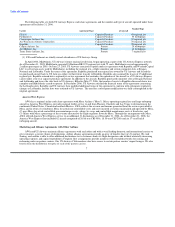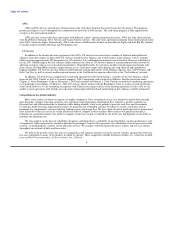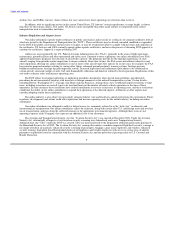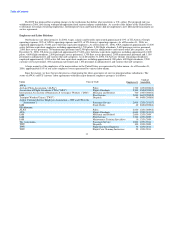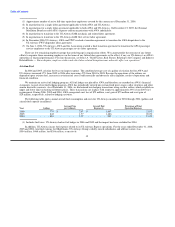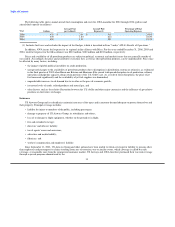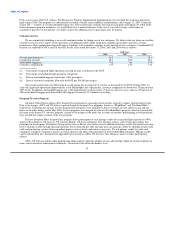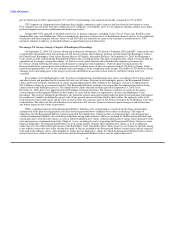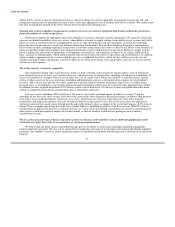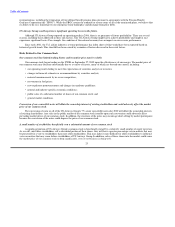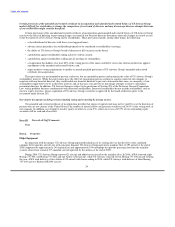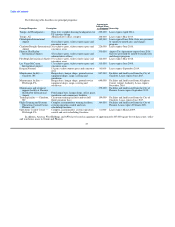US Airways 2006 Annual Report Download - page 20
Download and view the complete annual report
Please find page 20 of the 2006 US Airways annual report below. You can navigate through the pages in the report by either clicking on the pages listed below, or by using the keyword search tool below to find specific information within the annual report.
Table of Contents
claims but are not entitled to administrative claims status. Accordingly, the Reorganized Debtors believe that only a very small portion of
the claims filed in response to the bar dates for non-ordinary course administrative expense claims will actually be allowed in amounts
exceeding the ordinary course expenditures already contained in the Reorganized Debtors' business plan. However, there can be no
assurances that the aggregate amount of the claims ultimately allowed will not be material. To the extent any of these claims are allowed,
they will generally be satisfied in full.
Item 1A. Risk Factors
Below are a series of risk factors that may affect our results of operations or financial performance. We caution the reader that these
risk factors may not be exhaustive. We operate in a continually changing business environment, and new risk factors emerge from time to
time. Management cannot predict such new risk factors, nor can it assess the impact, if any, of these risk factors on our business or the
extent to which any factor or combination of factors may impact our business.
Risk Factors Relating to the Company and Industry Related Risks
Our business is dependent on the price and availability of aircraft fuel. Continued periods of historically high fuel costs, significant
disruptions in the supply of aircraft fuel or significant further increases in fuel costs could have a significant negative impact on our
operating results.
Our operating results are significantly impacted by changes in the availability or price of aircraft fuel. Although fuel prices recently
have decreased from historically high levels, fuel prices have increased substantially over the past several years. Due to the competitive
nature of the airline industry and market forces, we can offer no assurance that we may be able to increase our fares or otherwise increase
revenues sufficiently to offset fuel prices. Although we are currently able to obtain adequate supplies of aircraft fuel, we cannot predict
the future availability or price of aircraft fuel. In addition, from time to time we enter into hedging arrangements to protect against rising
fuel costs. Our ability to hedge in the future, however, may be limited. See also the discussion in Part II, Item 7A. "Quantitative and
Qualitative Disclosures About Market Risk."
Our high level of fixed obligations limits our ability to fund general corporate requirements and obtain additional financing, limits
our flexibility in responding to competitive developments and increases our vulnerability to adverse economic and industry conditions.
We have a significant amount of fixed obligations, including debt, aircraft leases and financings, aircraft purchase commitments,
leases of airport and other facilities and other cash obligations. We also have guaranteed costs associated with our regional alliances and
commitments to purchase aircraft. As a result of the substantial fixed costs associated with these obligations:
• A decrease in revenues results in a disproportionately greater percentage decrease in earnings.
• We may not have sufficient liquidity to fund all of these fixed costs if our revenues decline or costs increase.
• We may have to use our working capital to fund these fixed costs instead of funding general corporate requirements, including
capital expenditures.
• We may not have sufficient liquidity to respond to competitive developments and adverse economic conditions.
Our obligations also impact our ability to obtain additional financing, if needed, and our flexibility in the conduct of our business.
Our existing indebtedness is secured by substantially all of our assets. Moreover, the terms of our secured GE loan require us to maintain
unrestricted cash and cash equivalents of not less than $750 million (subject to partial reduction upon reduction in the principal amount
outstanding) over the term of the loan, require us to meet financial ratios and restrict our ability to take certain other actions, including
mergers and acquisitions, investments and asset sales. Our affinity credit card partner agreement with Juniper Bank, a subsidiary of
Barclays PLC, requires us to maintain an average quarterly balance of cash, cash equivalents and short-term investments of at least
$1 billion for the entirety of the agreement.
17


